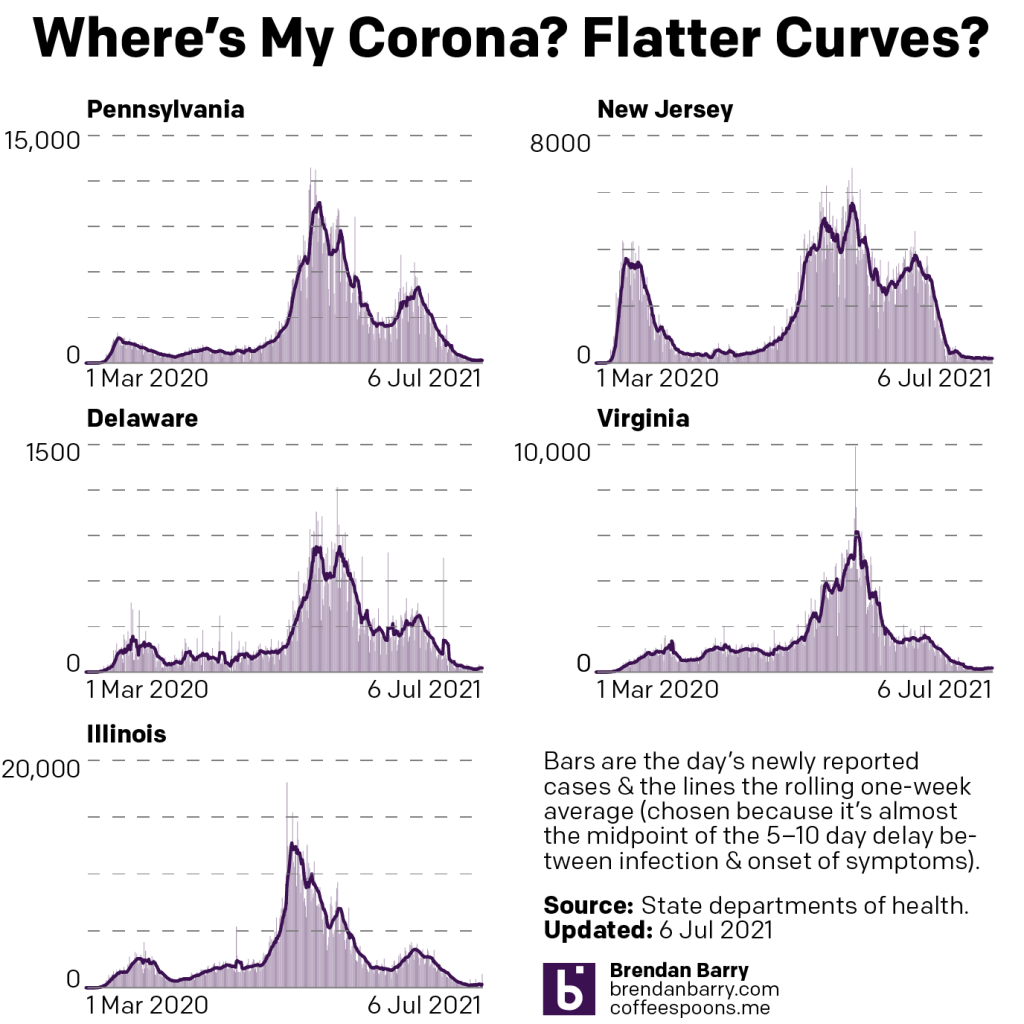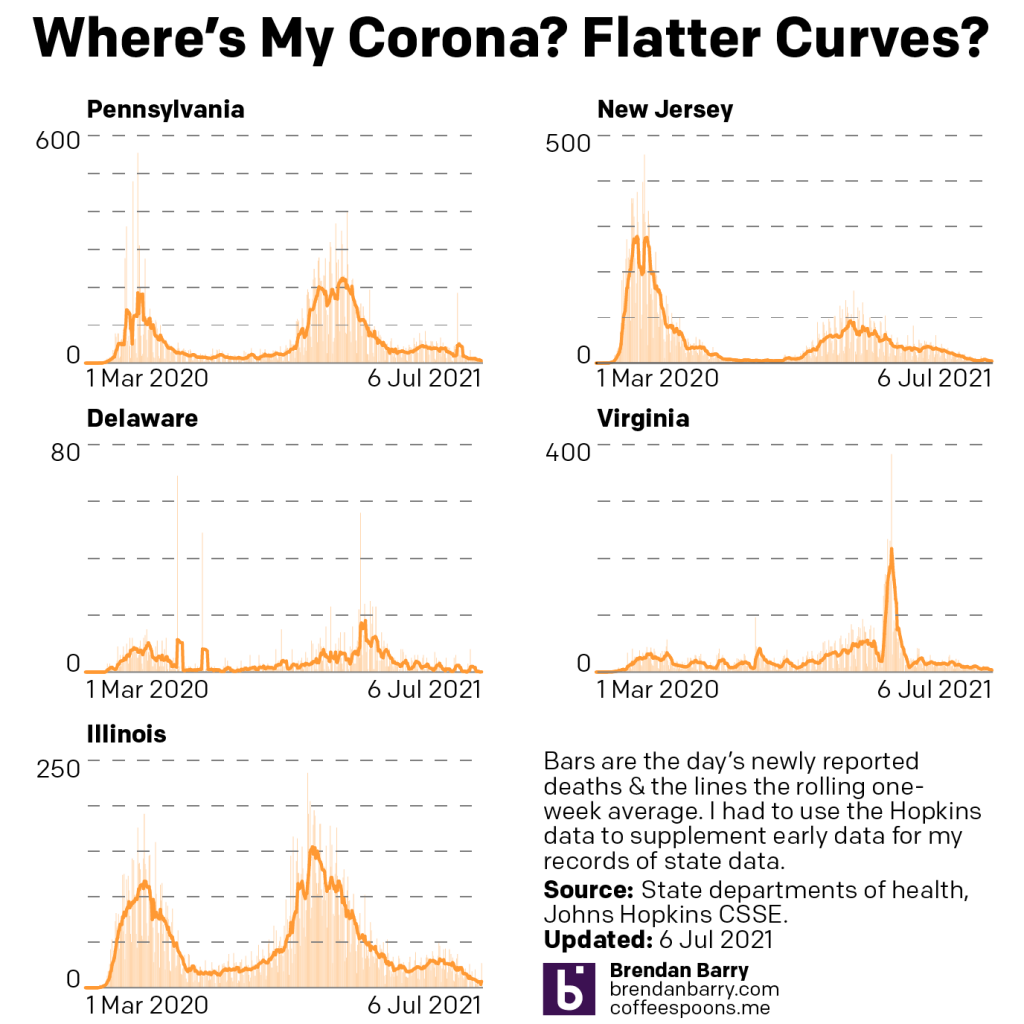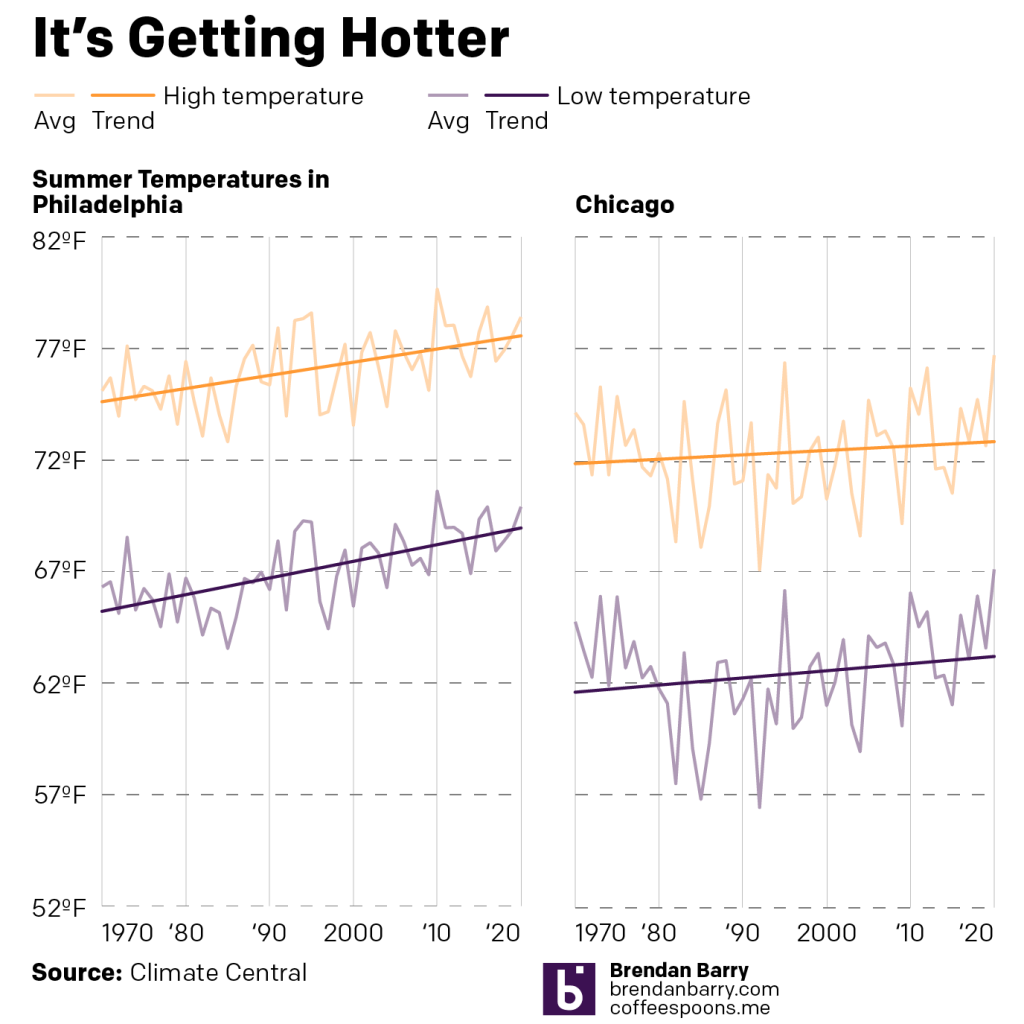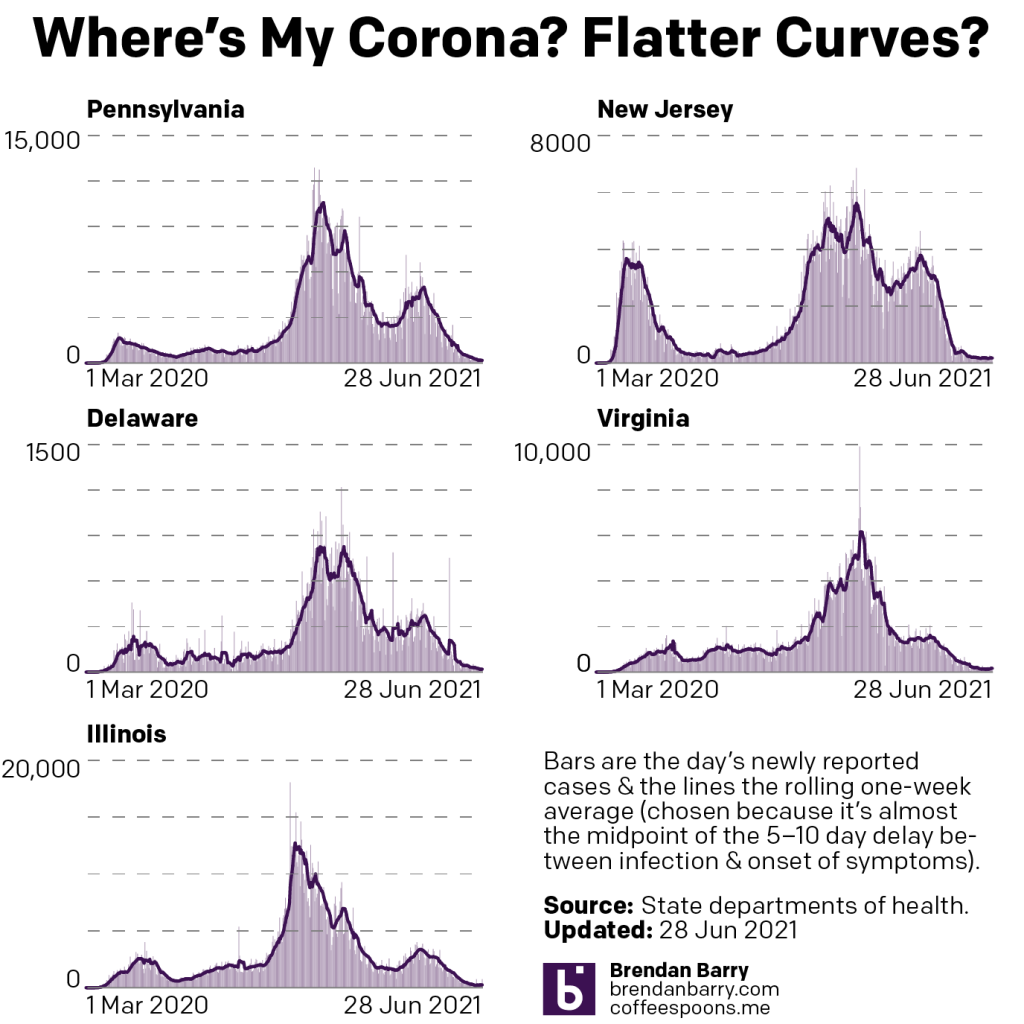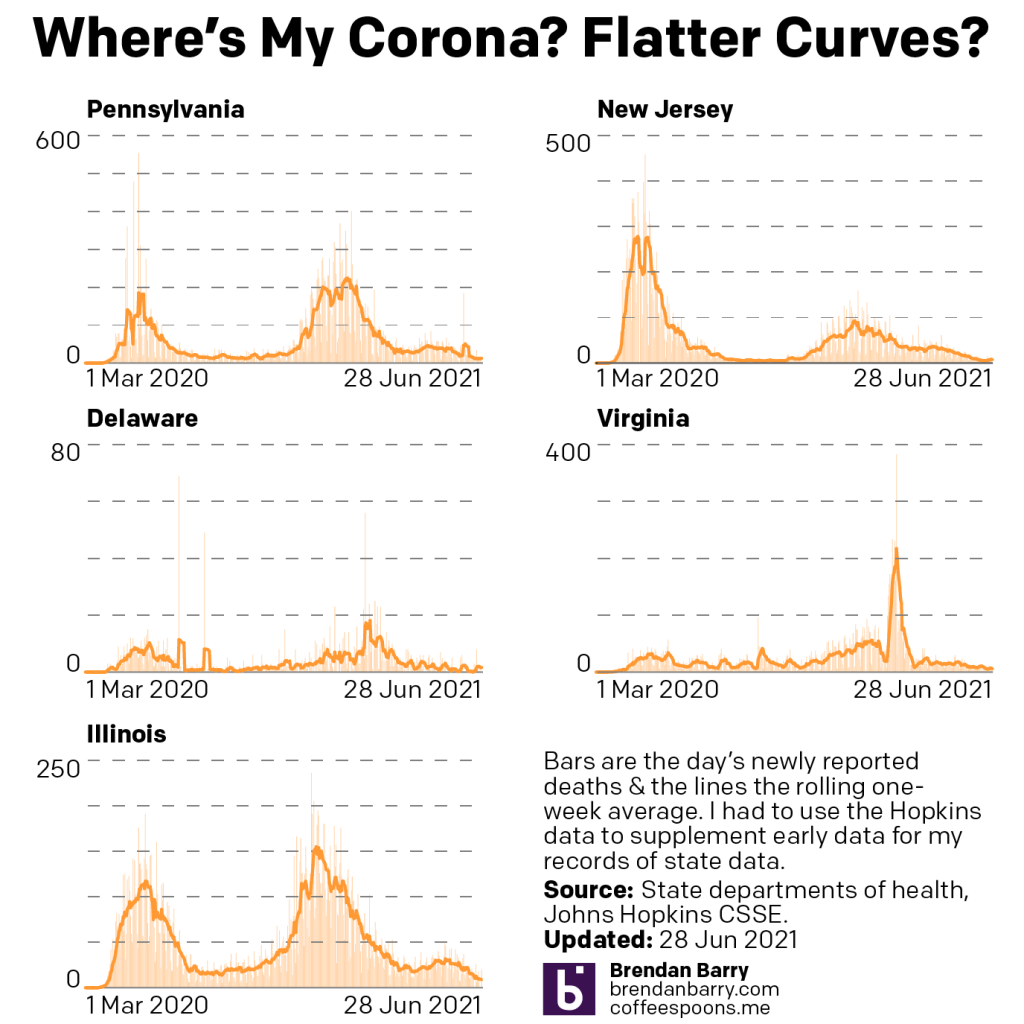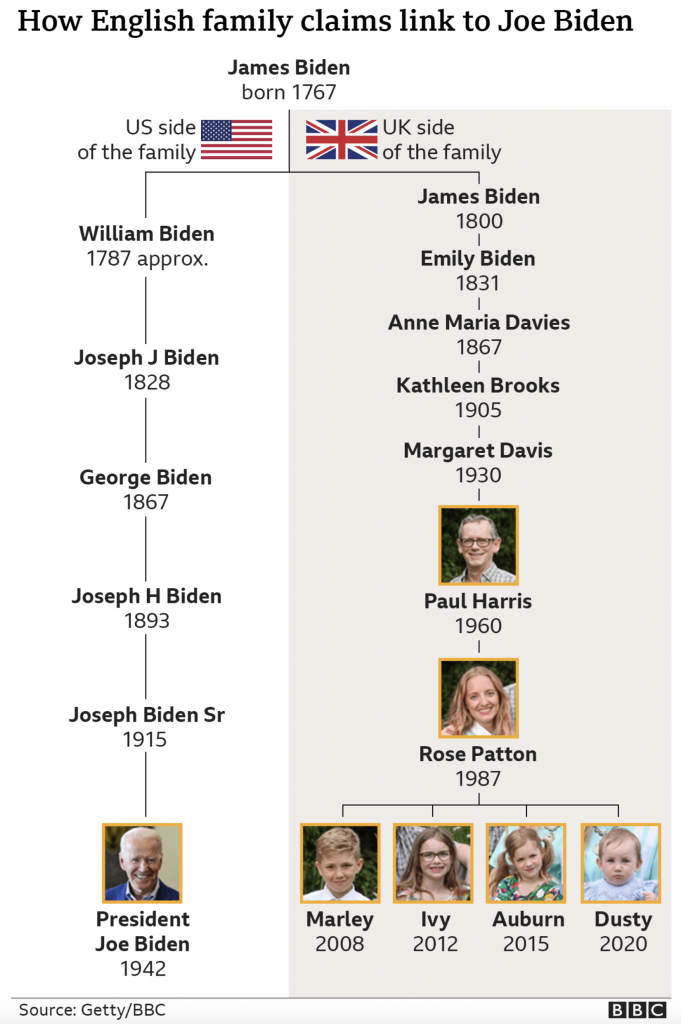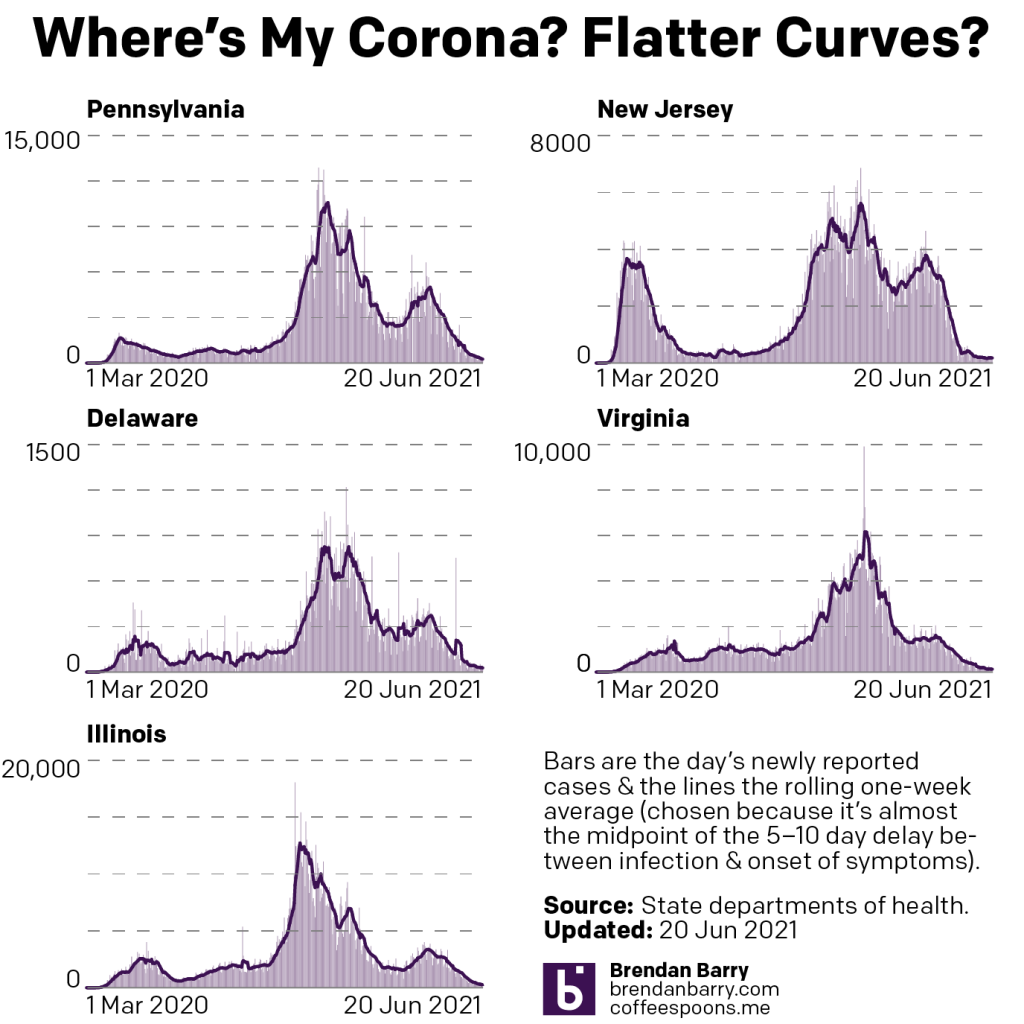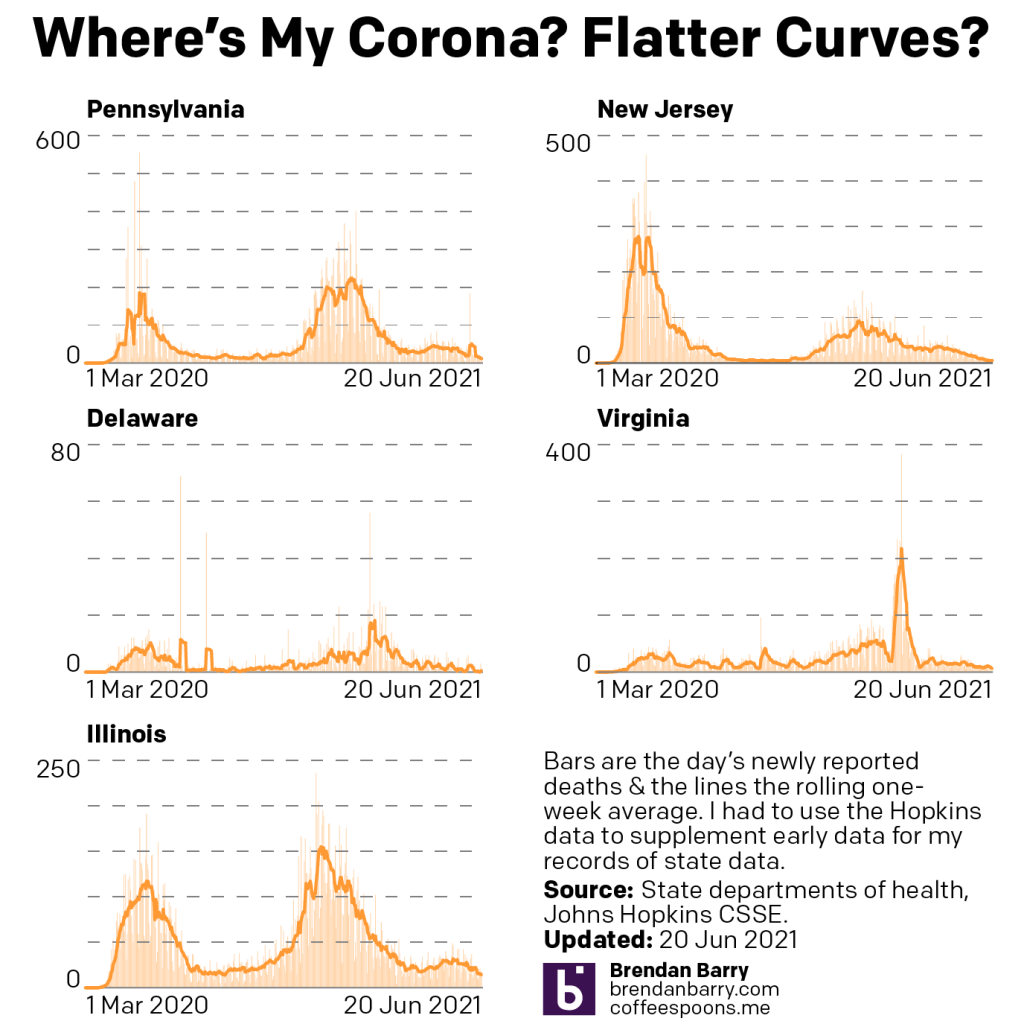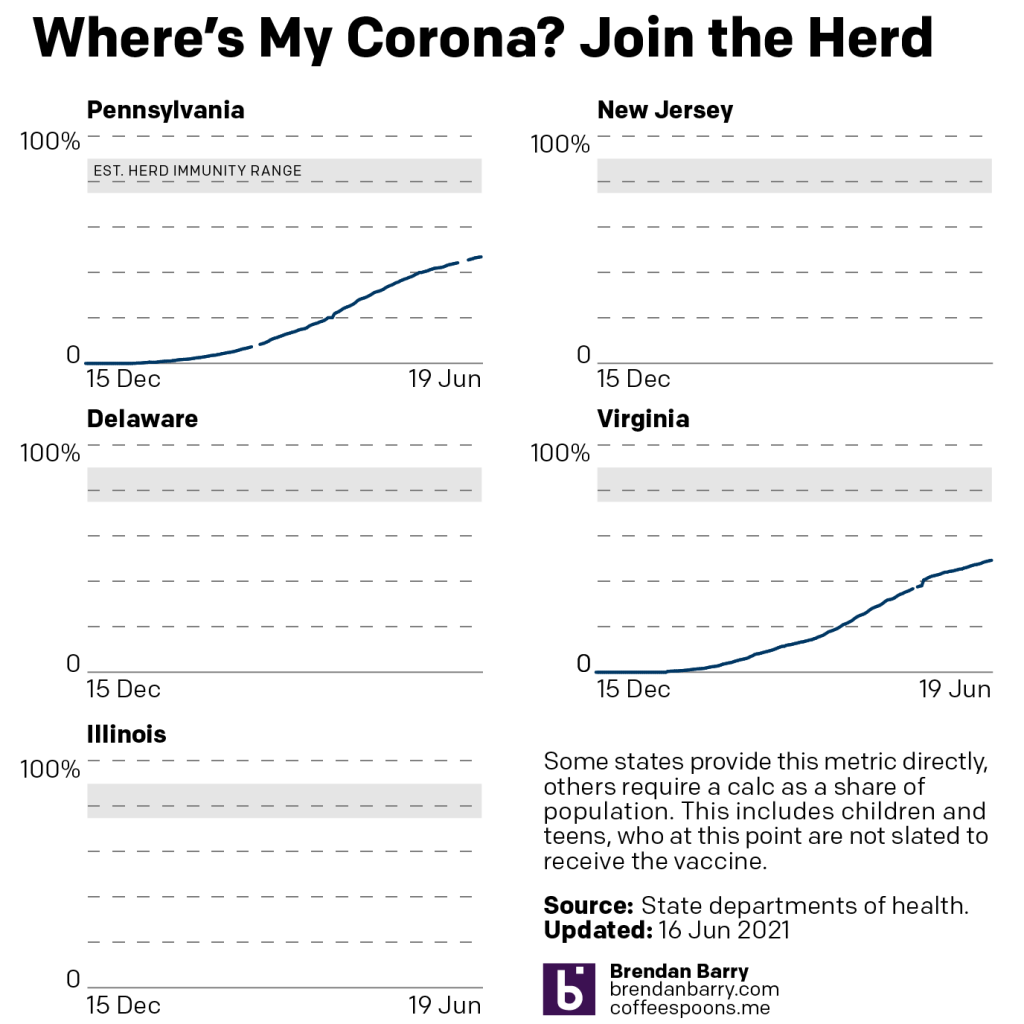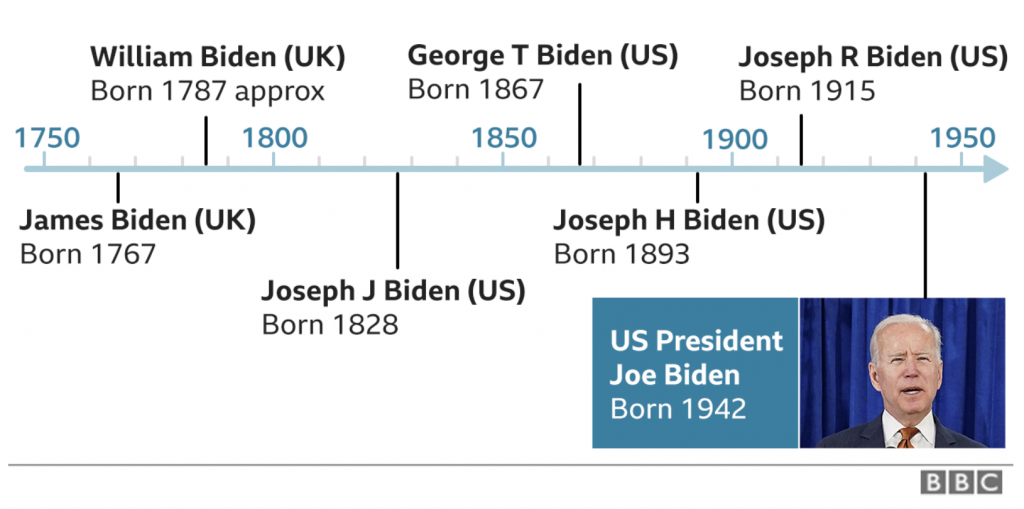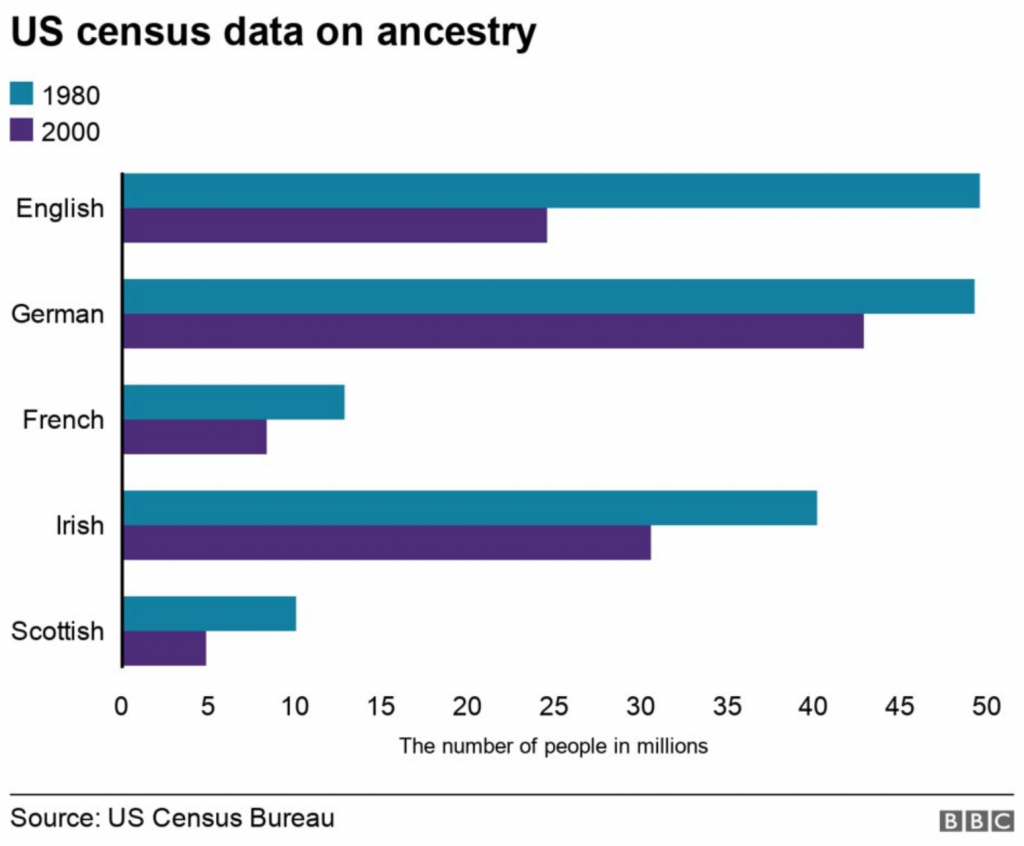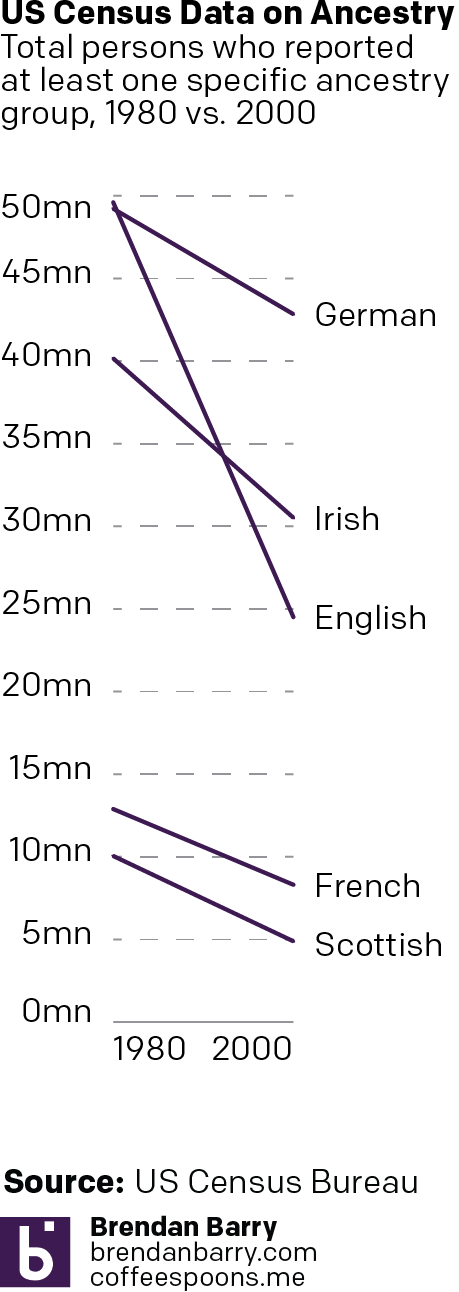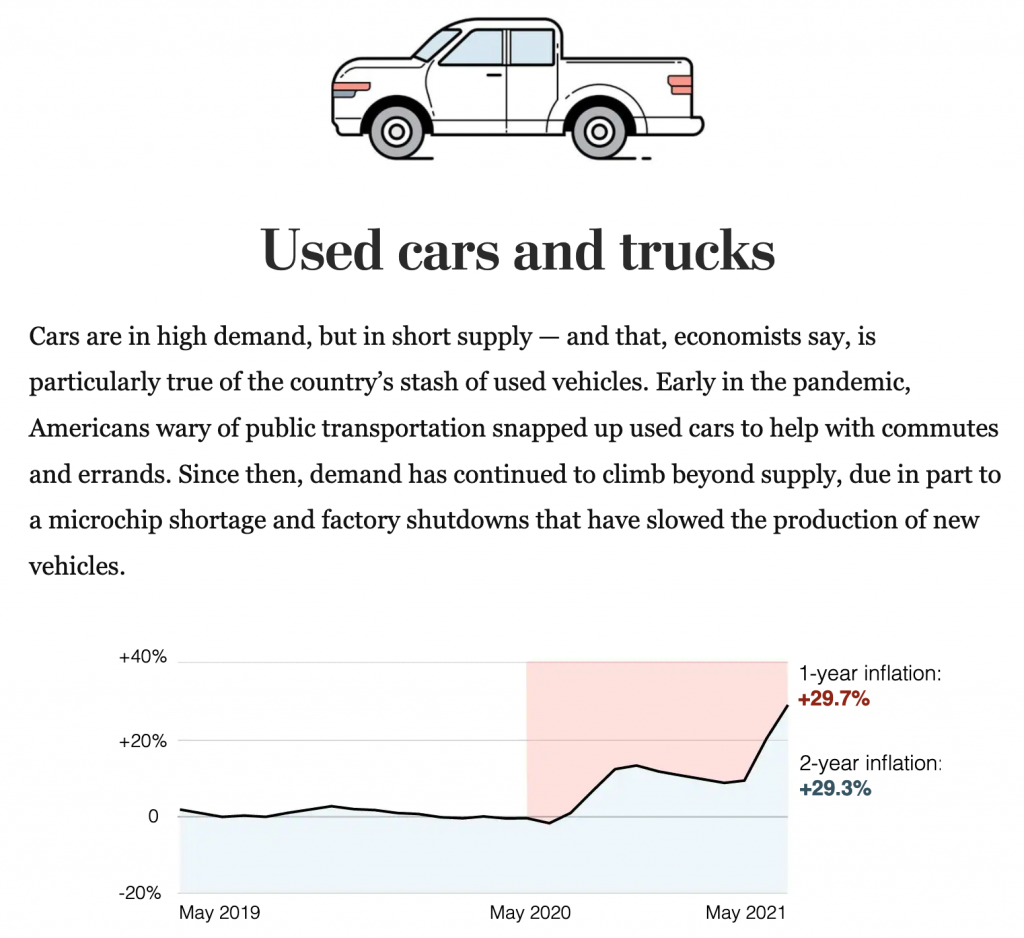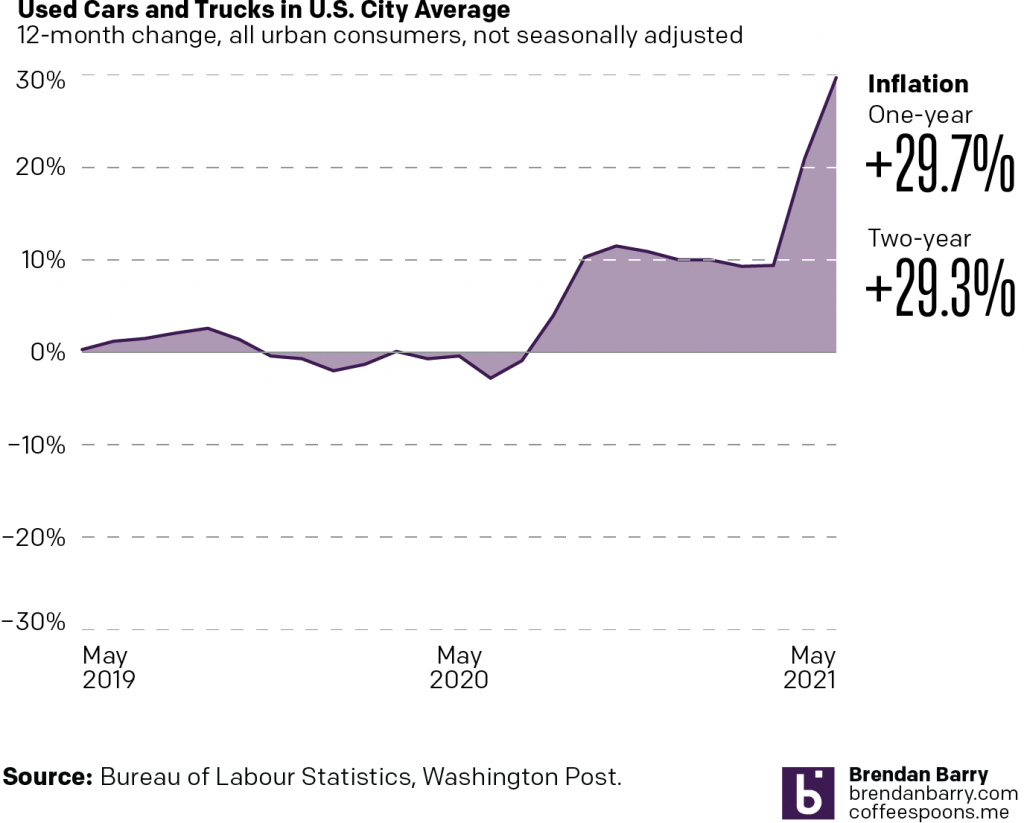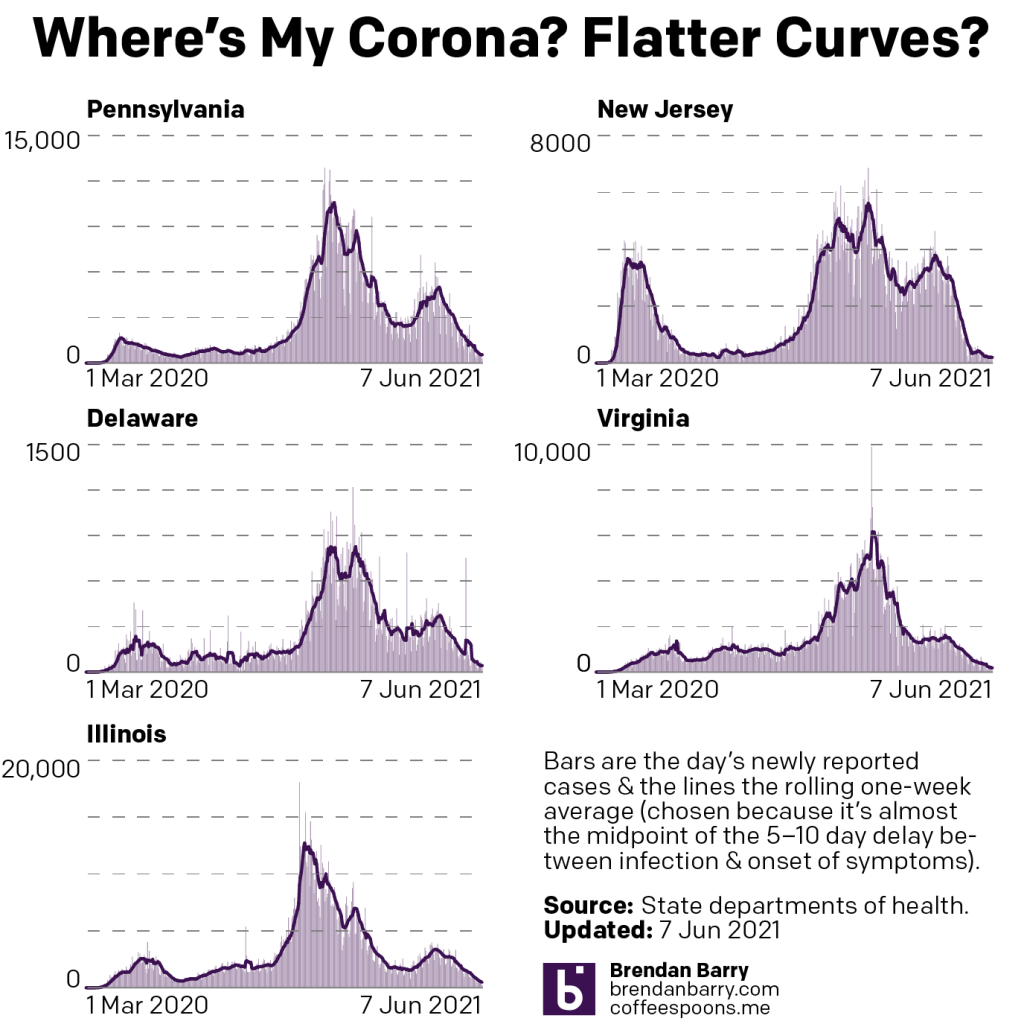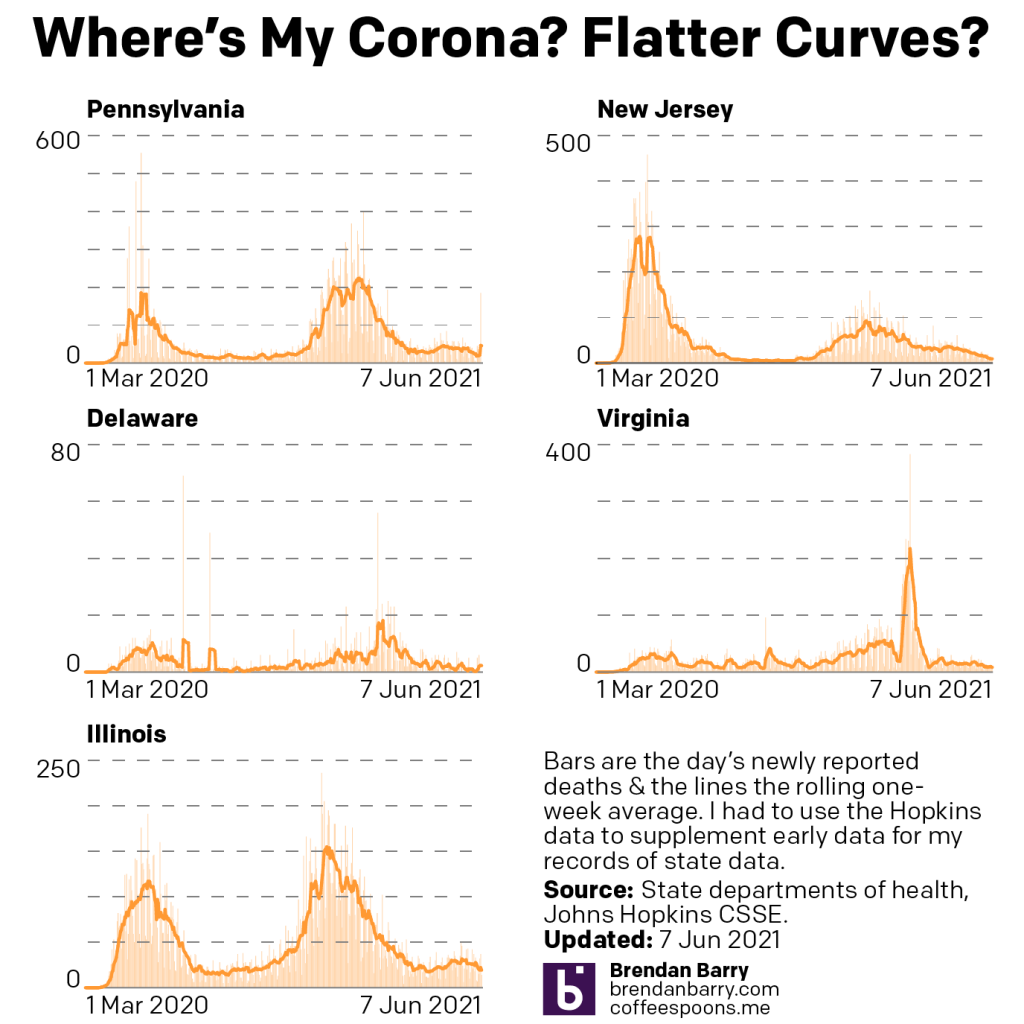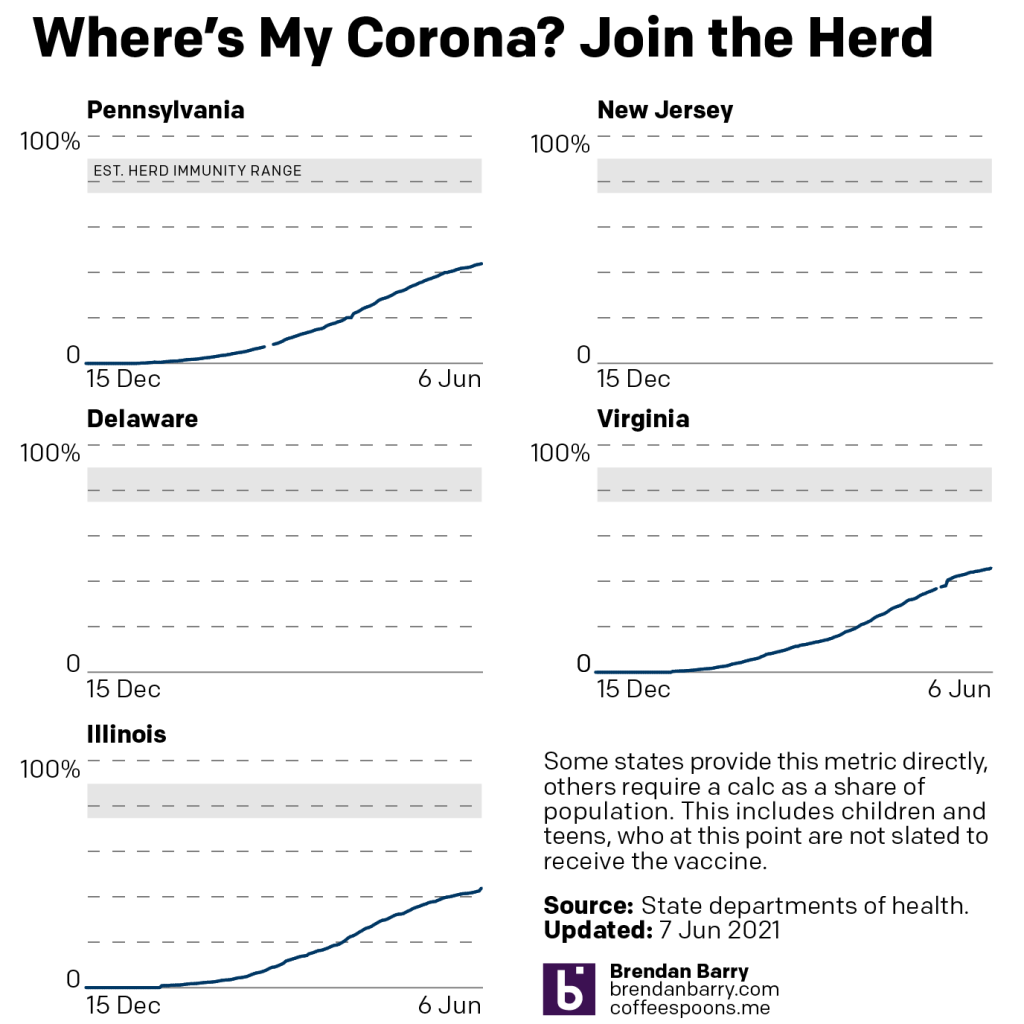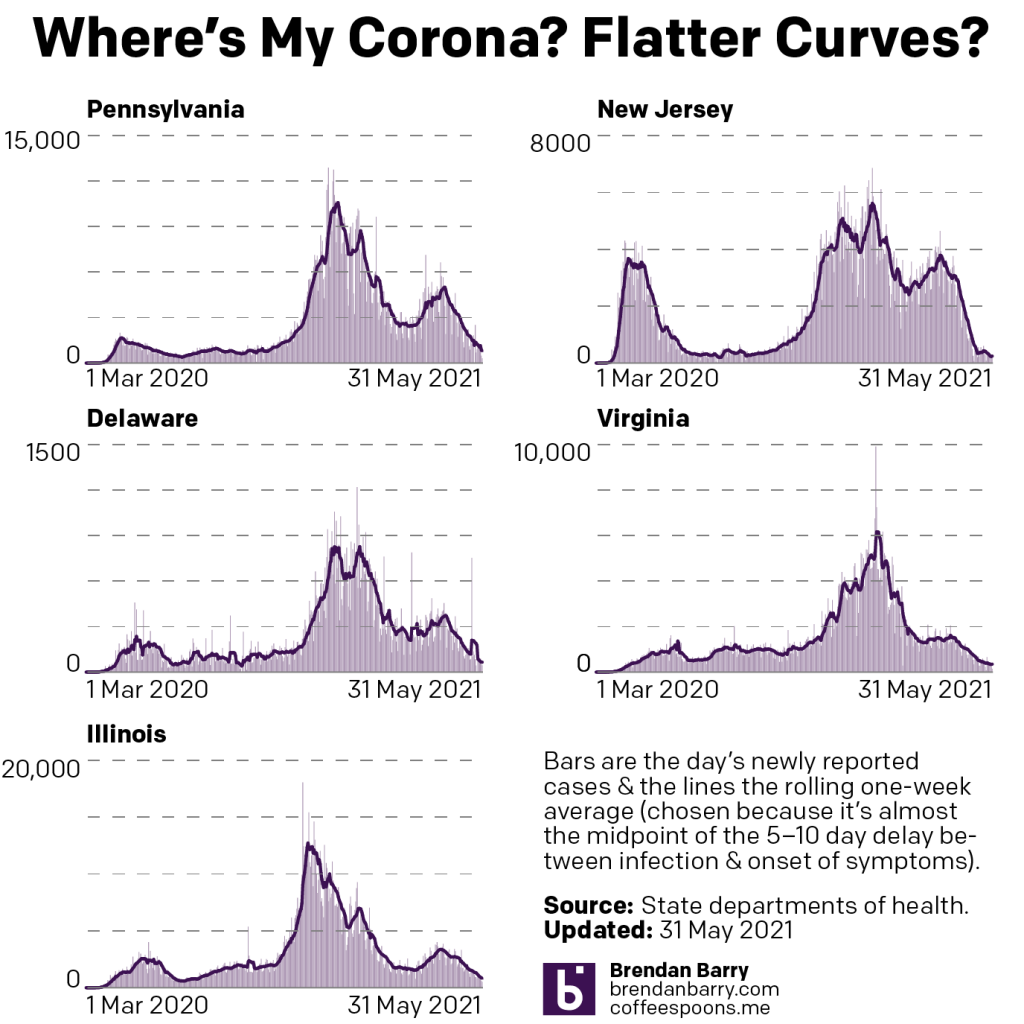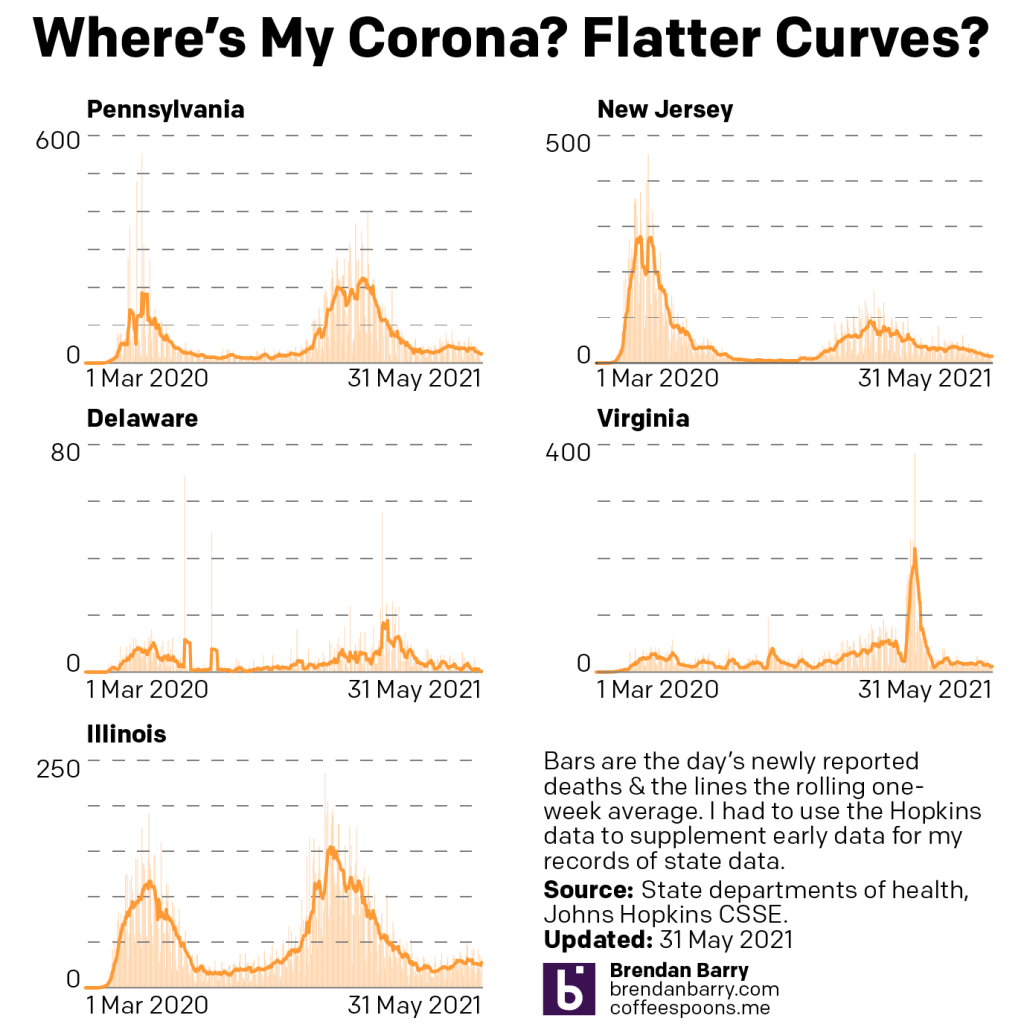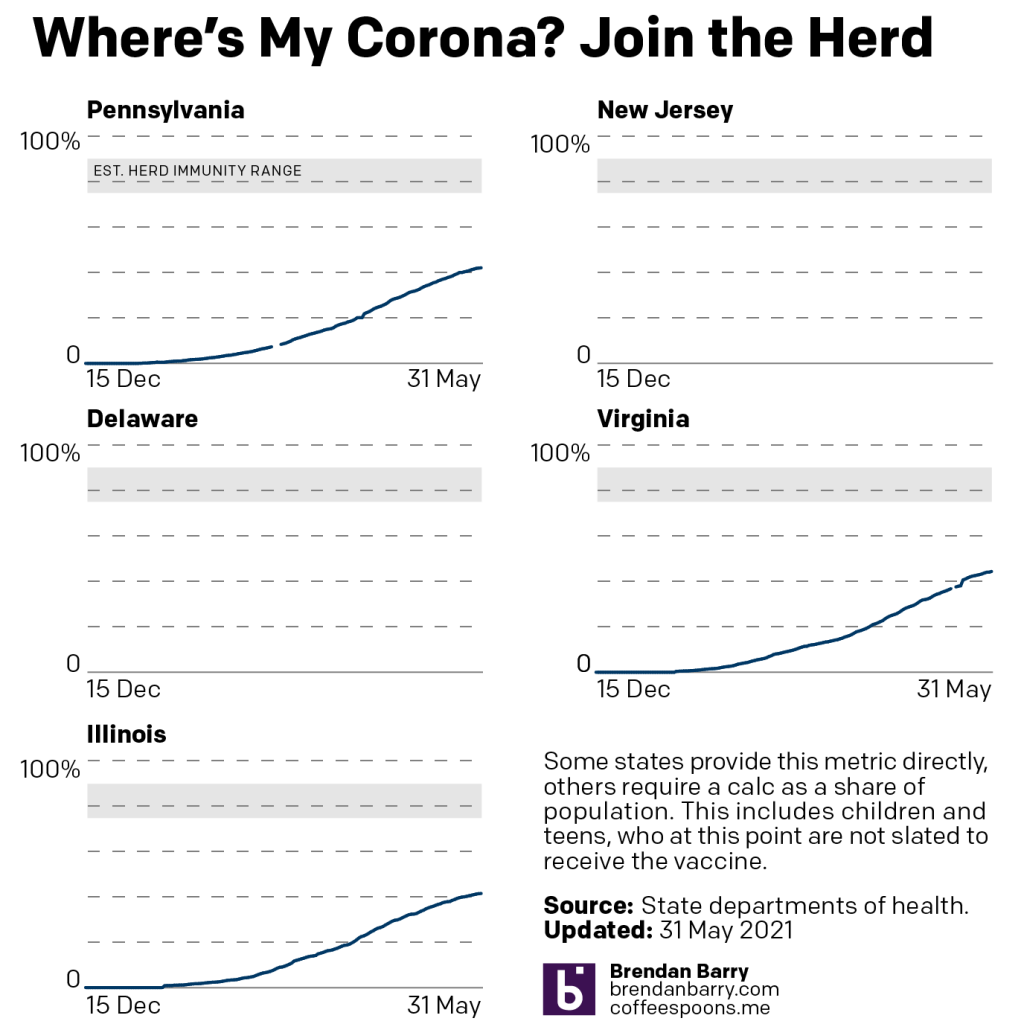So Mondays no longer work for these regular updates, because as we know Illinois no longer reports weekend data. Starting next week, neither will Virginia. Furthermore, keeping track of the vaccinations is tough, because the same. But also, then we have Pennsylvania, which includes Philadelphia, but Philadelphia only updates vaccination data twice per week.
Consequently, I’m not sure what I’m going to continue doing. But at the least, these updates of cases and deaths could continue, because after one cycle the zero numbers for Saturday and Sunday will average out.
The question is where are we today?
Well when it comes to new cases, we are seeing slight upticks across the board.
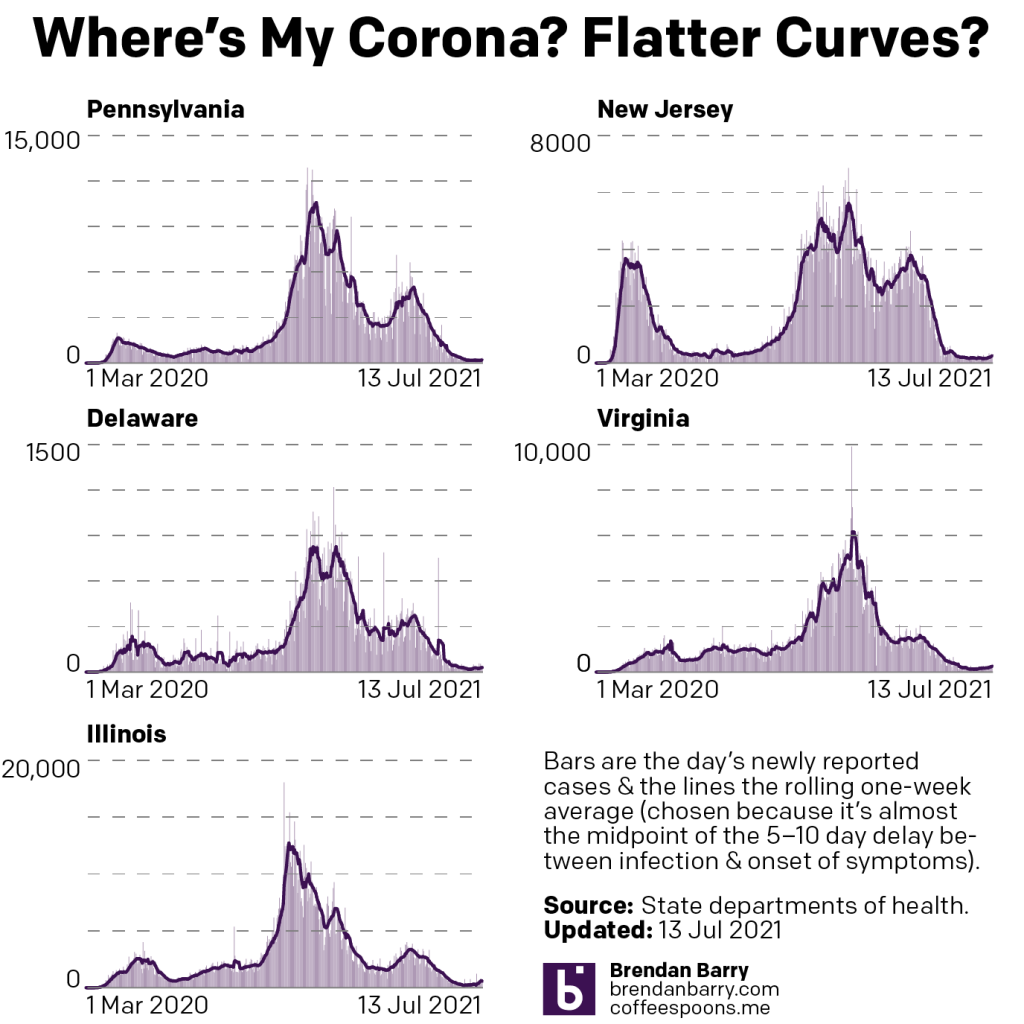
But whereas the upticks were slight last week in Pennsylvania and Delaware, they were a little bit greater this week. Still, we are far from drastic upswings, but they are noticeable. Look at the very tail end of Delaware and you will see a slight change in the curve’s slope. Pennsylvania’s is, for now, less noticeable.
In New Jersey, where cases had still been declining last week, the numbers are now heading back up. You can see this as well in the chart with a sudden little jump in the last day or so.
Meanwhile in Virginia and Illinois, the upward swings have clearly begun and they are plainly visible. But the numbers are increasing, because in Virginia today’s seven-day average is now the highest it’s been since the end of May. In Illinois, yesterday’s average was higher than today’s, but both are about the same as the average was in the beginning of June.
State departments of health indicate these increases are mostly all in unvaccinated people. And that’s not terribly surprising given that the new Delta variant beginning to take root in the United States is far more effective at viral spread than its predecessors. The worry is that the variant may be more lethal.
And to that point we are also seeing the seven-day average for deaths rebound in most states.
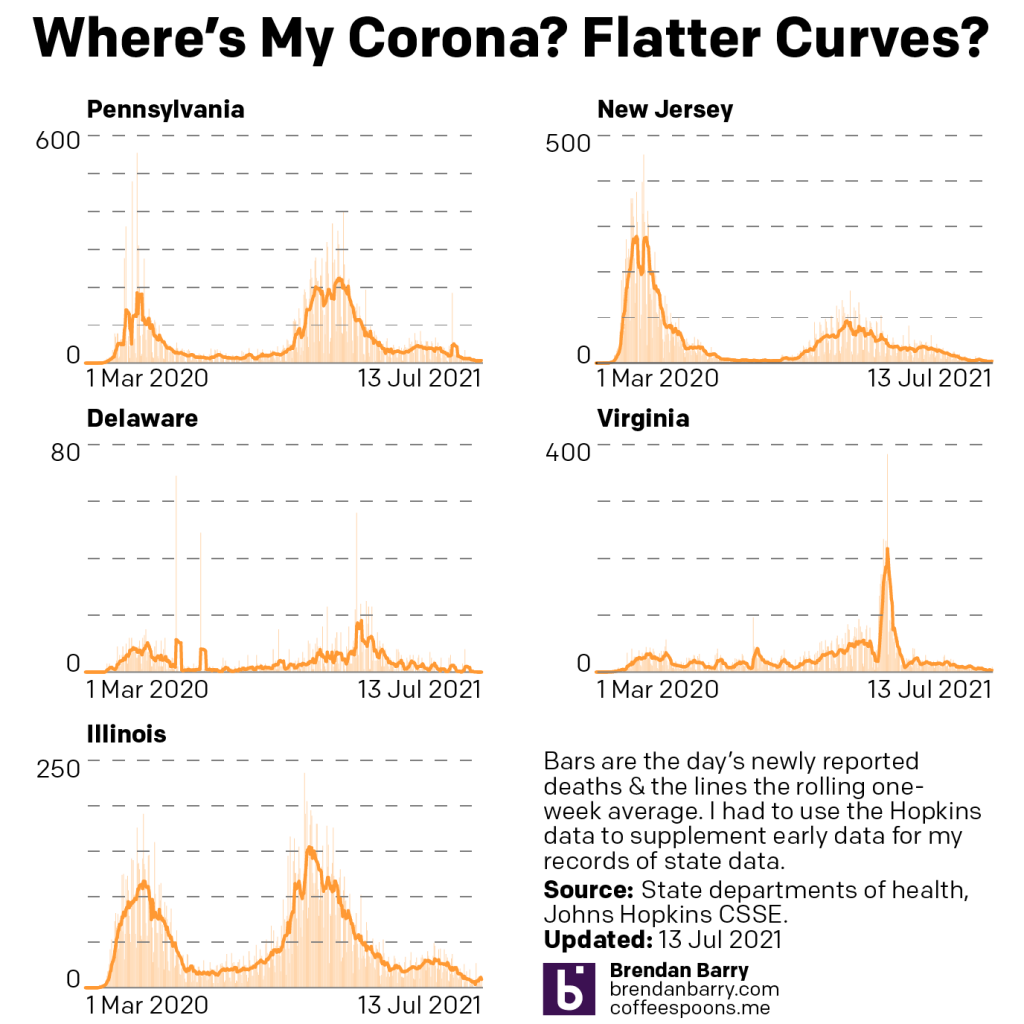
First, the exception. Delaware has now gone over a week without any Covid-19 death and its average now sits at 0.0.
In all other states, the trend is pretty clear if not visible in the charts. Illinois is the most obvious where the recent rise in deaths from Covid-19 can be seen in the sharp jump of the orange line at the tail end of the chart. The state is now flirting with double-digit death rates after hitting 11 and 13 deaths per day Sunday and Monday.
Elsewhere, we have numbers creeping up, but still below the levels we saw two weeks ago. On 28 June, Pennsylvania averaged 12 deaths per day. That had fallen to 5 for last week’s write-up, but today it sits at 7. New Jersey went from 8 to 4 but is back up to 5. And Virginia went from 6 to 3 and is now at 4.
Again, these are not catastrophic increases, to be clear. However, after several weeks of declining numbers of deaths the death rates are climbing once more. As with new cases, state departments of health point to the deaths being in the unvaccinated populations.
If you haven’t been vaccinated yet, I encourage you to do so. They have been proven both safe and effective. And if cost is your concern, they’re free. This new Delta variant can make you sick even if you’re only partially vaccinated—only one of the two required shots for Pfizer and Moderna. Factor in the month+ you need from your first of the Pfizer and Moderna doses through the second and the two-week waiting period, it’s critical you schedule your shots as soon as possible.
I’ll try to look at writing up the numbers again next Tuesday or Wednesday, and over the course of the week I’ll be following these numbers. Though I’m not entirely certain I’ll continue posting them daily to my social media feeds. (In fairness, I’ve been busy enough to preclude me from doing that the last two weeks.)
Credit for the piece is mine.

